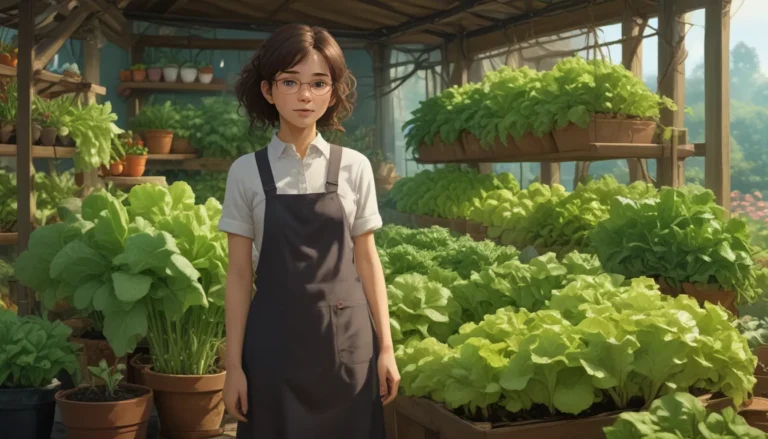Everything You Need to Know About Rose Mosaic Virus

Are you a rose enthusiast who loves tending to your garden and admiring the beauty of your plants? If so, you may be familiar with the dreaded Rose Mosaic Virus. Despite its misleading name, this viral disease is nothing to cheer about. It can wreak havoc on your beloved roses, causing them to fail to bloom and potentially leading to their demise. The worst part? There’s no cure for it.
But don’t fret just yet. With the right knowledge and a bit of guidance, you can learn to identify and manage this pesky virus. In this comprehensive guide, we’ll delve into the intricacies of Rose Mosaic Virus, covering everything from its symptoms to treatment options. So, let’s get started!
Understanding Rose Mosaic Virus
Rose Mosaic Virus isn’t a single disease but a combination of various viral infections that affect roses. Common culprits include apple mosaic virus, Arabis mosaic virus, and Prunus necrotic ringspot virus. Collectively known as Rose Mosaic Virus Complex (RMVc), these viruses share similar symptoms and treatment strategies.
Photo by Kristine Lofgren.
As one of the most prevalent diseases affecting roses in North America, RMVc is a common scourge that many gardeners encounter. Fortunately, with a keen eye and the right information, you can effectively manage this viral menace in your garden.
Recognizing Symptoms of Rose Mosaic Virus
Identifying Rose Mosaic Virus can be tricky, as its symptoms vary in appearance. Look out for mottled leaves with yellow circles, lines, or zig-zags, indicating a potential infection. Additionally, you may notice squiggly yellow lines or watermarking on the foliage, resembling insect damage.
Photo by Kristine Lofgren.
Distinctive oak-leaf patterns and mottled flower petals are telltale signs of RMVc. These symptoms typically manifest in spring, though they may also appear in fall. Keep an eye out for stunted growth, reduced blooming, and increased susceptibility to frost damage, as these are common outcomes of the virus.
While RMVc affects the entire plant systemically, symptoms usually appear in specific sections. New growth may mask infected areas as the season progresses, making it challenging to detect the virus early on.
Understanding How RMVc Spreads
Unlike some plant diseases, Rose Mosaic Virus doesn’t spread through tools or insects. Instead, it is primarily transmitted through grafting, cuttings, or budding from infected plants. Breeders inadvertently using infected plants for propagation may unknowingly introduce the virus to new specimens.
Photo by Kristine Lofgren.
Testing services are available to confirm the presence of the disease, but not all breeders opt for this precaution. Pollen transmission between species is also a concern, though roses do not typically spread RMVc through this route. In a garden setting, the virus does not transmit from plant to plant.
Managing Rose Mosaic Virus
Unfortunately, there is no cure for RMVc, making it a challenging disease to combat. While pruning may temporarily improve the plant’s appearance, it won’t eliminate the infection. For severely affected plants, replacing them with certified disease-free specimens is often the best course of action.
Photo by Kristine Lofgren.
When purchasing new plants, look for certification indicating they are RMVc-free. Reputable growers take pride in selling disease-free stock and typically display this information prominently on their labels.
Embracing Rose Care Strategies
Dealing with Rose Mosaic Virus can be disheartening, but with the right approach, you can safeguard your garden against this insidious disease. By staying informed and adopting preventive measures, you can minimize the impact of RMVc on your roses.
Photo by Kristine Lofgren.
Consider the following rose care strategies to protect your plants and promote their health:
- Regularly inspect your roses for signs of infection, such as mottled leaves and unusual patterns on foliage.
- Practice proper plant hygiene by sanitizing tools and equipment to prevent disease spread.
- Select disease-resistant rose varieties when adding new plants to your garden.
- Maintain optimal growing conditions, including adequate sunlight, water, and soil nutrition.
- Consult with local horticultural experts for tailored advice on managing Rose Mosaic Virus.
Conclusion: Navigating the World of Rose Mosaic Virus
In the realm of gardening, confronting plant diseases like Rose Mosaic Virus is an inevitable challenge. While there is no magical solution to eradicate this viral scourge, knowledge and proactive strategies can empower you to protect your roses and preserve their beauty.
Photo by Kristine Lofgren.
By familiarizing yourself with the symptoms, spread mechanisms, and treatment options for RMVc, you can effectively manage this disease and safeguard your garden from its destructive impact. Remember, prevention is always better than cure, so prioritize disease-free plants and diligent care practices to keep your roses thriving.
Are you currently grappling with Rose Mosaic Virus in your garden? Share your experiences and symptoms in the comments below. Together, we can cultivate healthier, more vibrant gardens free from the grasp of this relentless viral disease.
We hope this comprehensive guide has equipped you with valuable insights for navigating the world of Rose Mosaic Virus. For more expert advice on rose care and disease management, explore our collection of informative gardening guides:
- Growing Roses 101: A Beginner’s Guide
- Combatting Common Rose Diseases: Identification and Treatment
- Defeating Rose Rosette Disease (Witches’-Broom): Prevention Tips
- Troubleshooting Leaf Drop in Roses: Common Causes and Remedies
Remember, knowledge is your best ally in the fight against garden pests and diseases. Stay informed, stay vigilant, and watch your garden bloom with vitality and resilience.
*Photos by Kristine Lofgren





